Abstract
Thirty-two patients with Parkinsonism were treated with L-dopa. Nine were markedly and 14 moderately improved. Twenty patients tolerated the drug well, derived definite improvement, and were treated for an average period of six months. Improvement was sustained during this period even though the average daily dosage of L-dopa was reduced. Dose-dependent side-effects occurred in 25 patients. It is suggested that dosage schedules should be flexible and tailored to the needs of each individual patient, and that treatment should be continued for six months before presuming it to be ineffective.
It is concluded that L-dopa often ameliorates Parkinsonism for long periods, but its effect on the natural history of the disease is undertermined.
Full text
PDF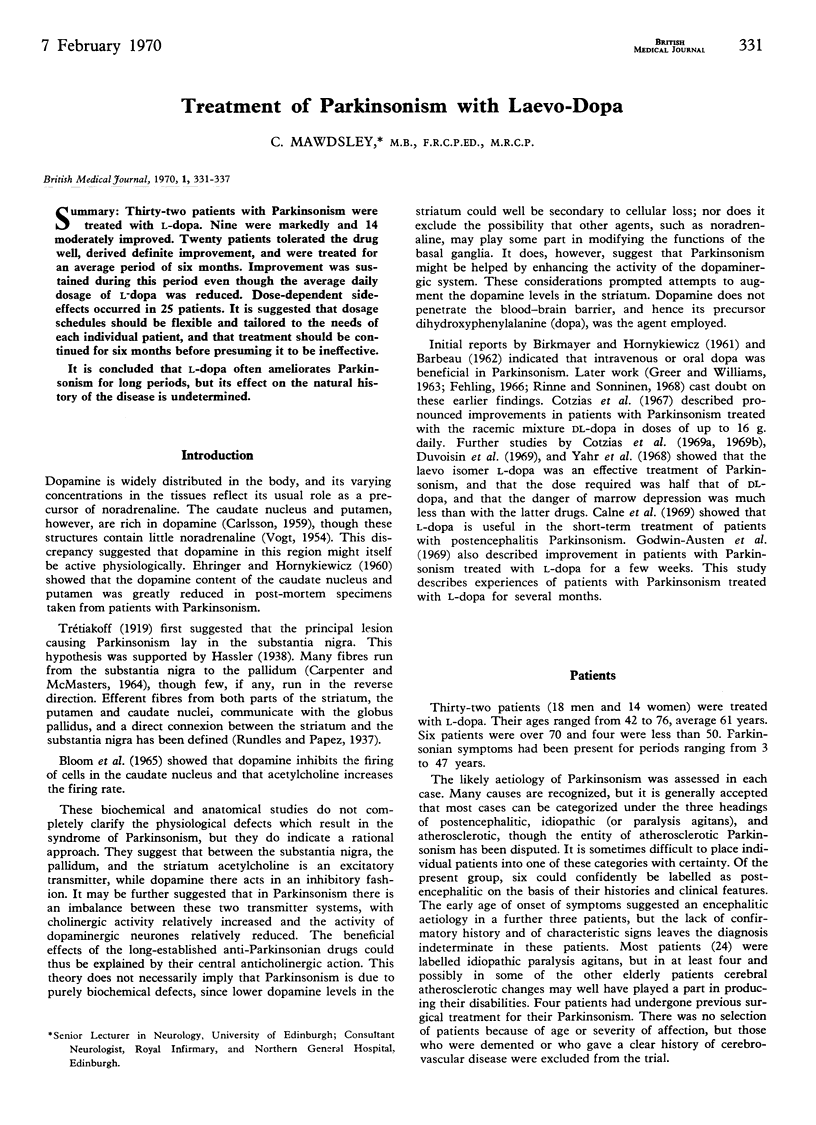
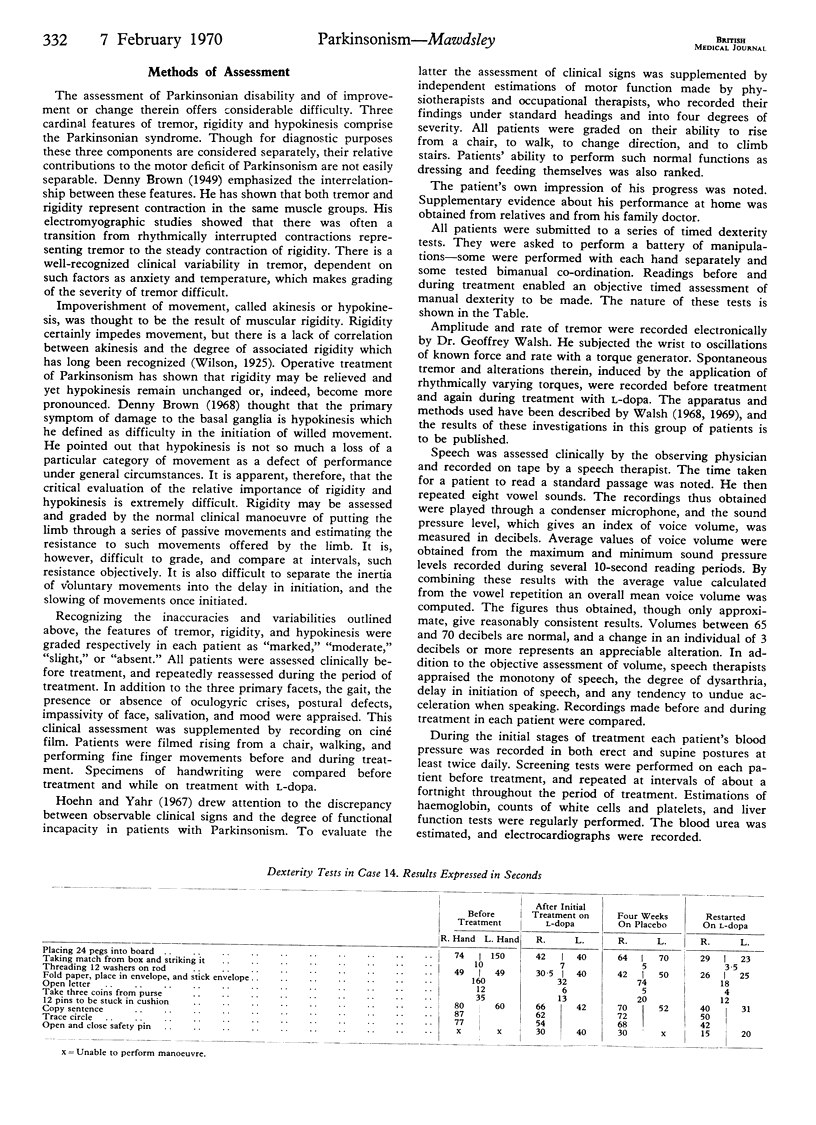
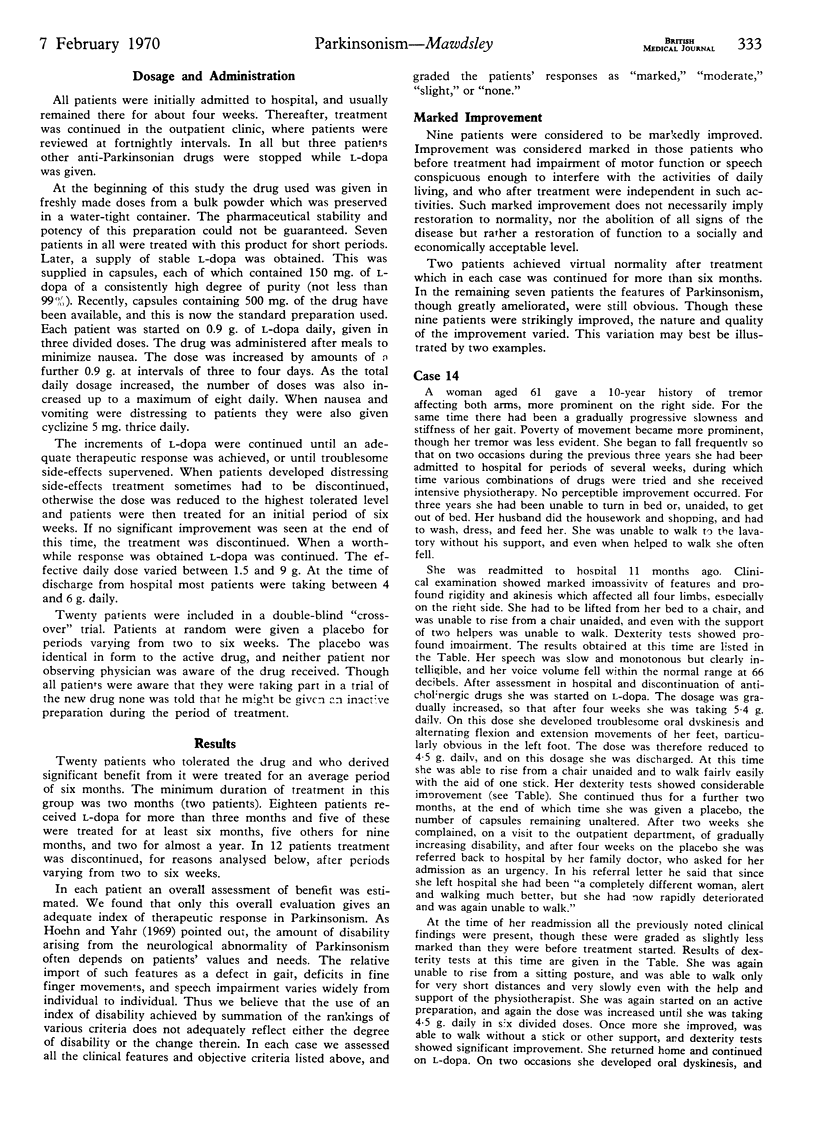
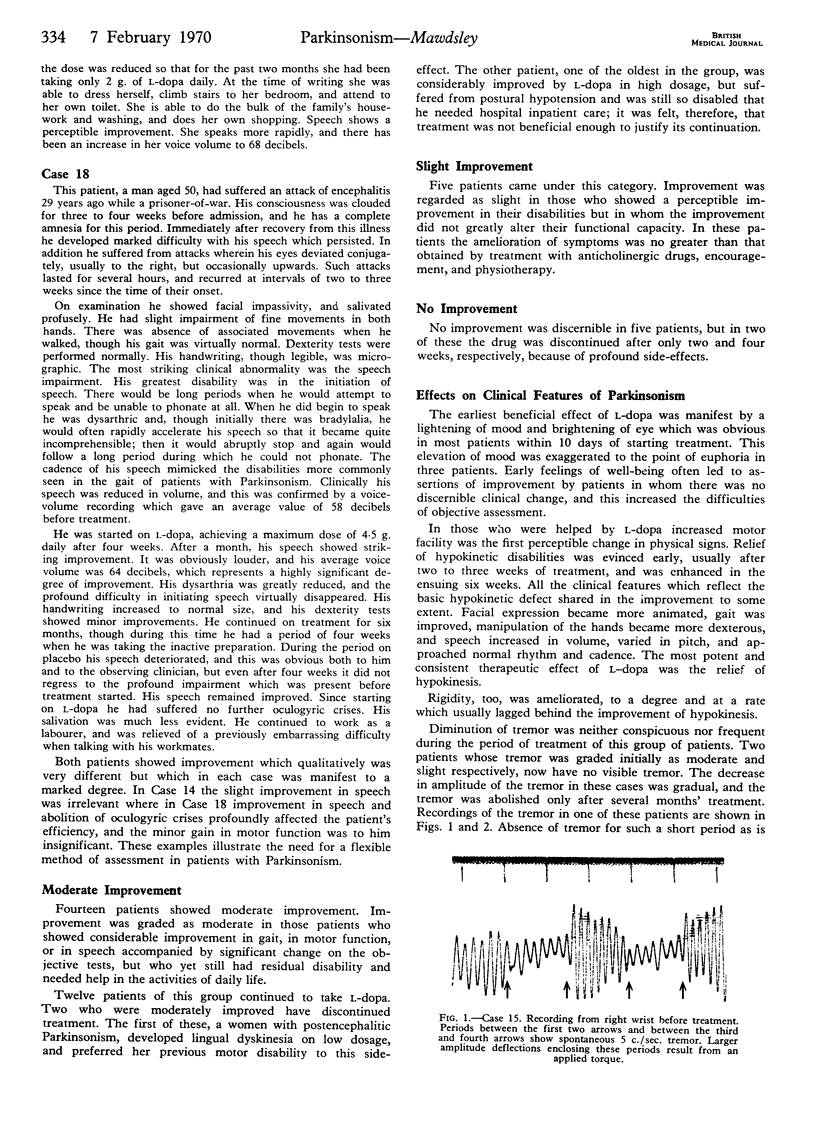
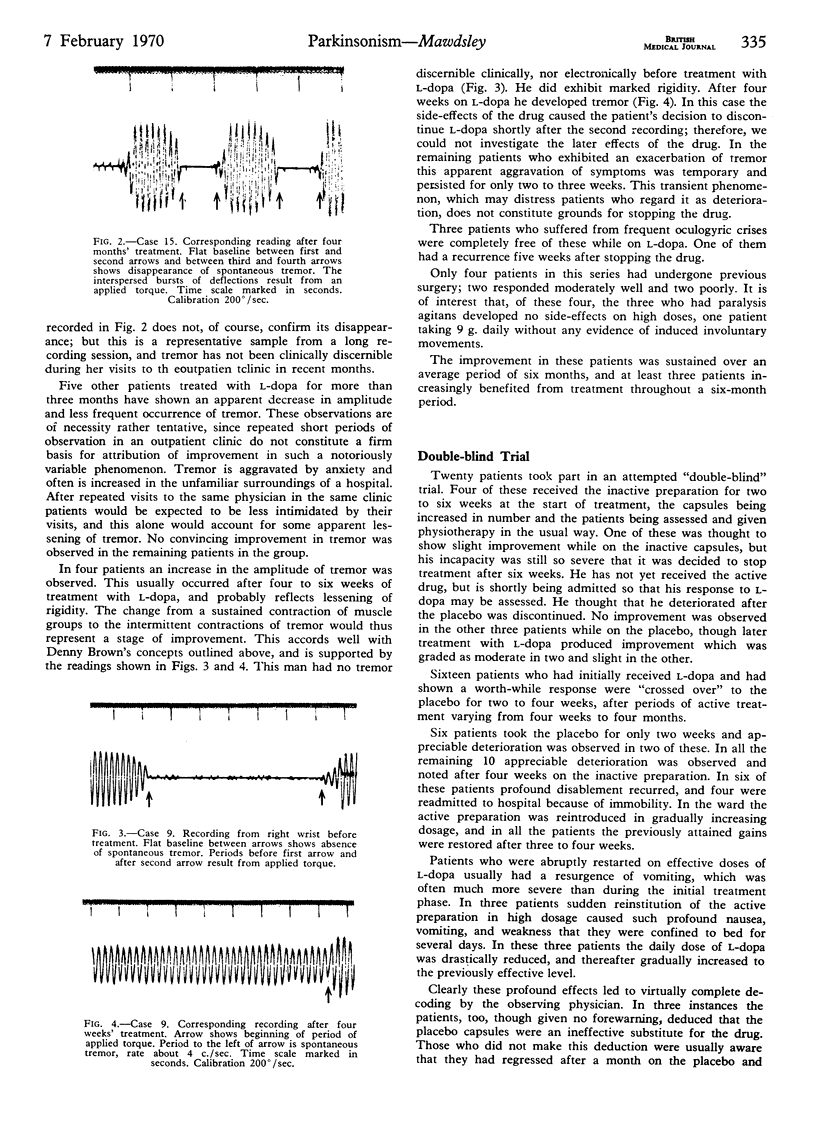
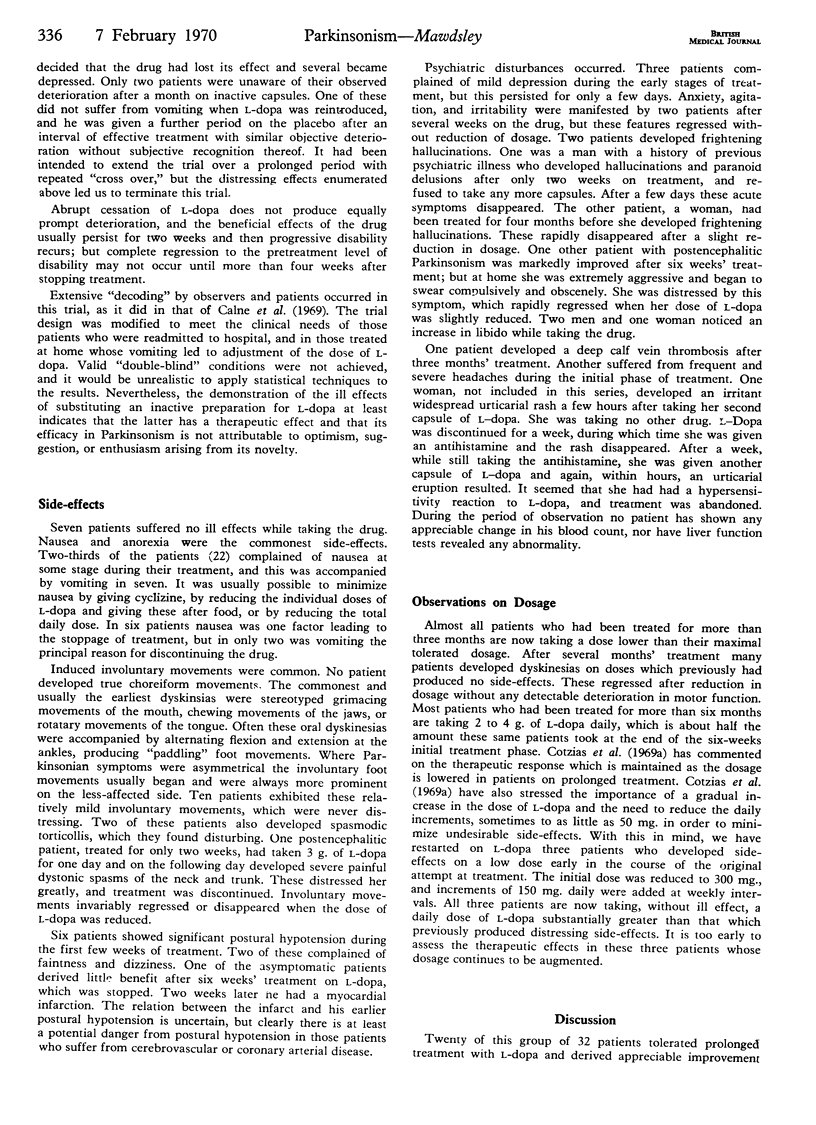
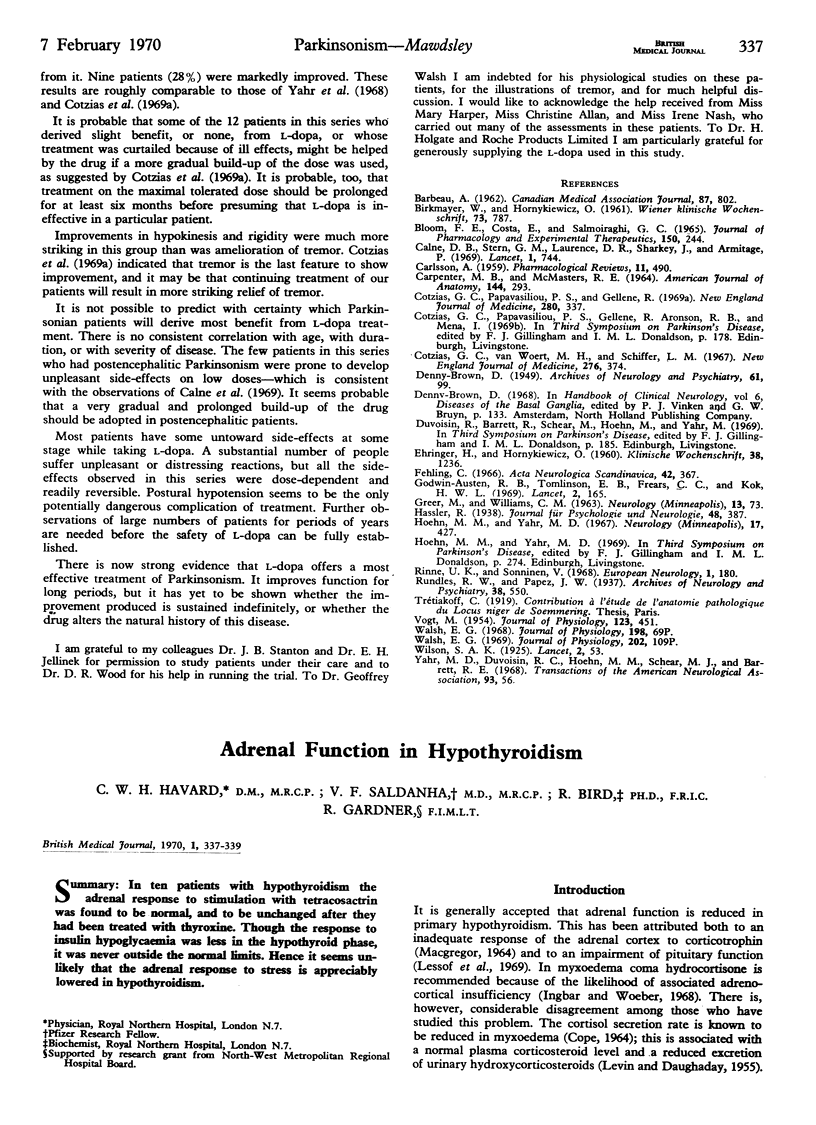
Selected References
These references are in PubMed. This may not be the complete list of references from this article.
- BIRKMAYER W., HORNYKIEWICZ O. [The L-3,4-dioxyphenylalanine (DOPA)-effect in Parkinson-akinesia]. Wien Klin Wochenschr. 1961 Nov 10;73:787–788. [PubMed] [Google Scholar]
- Bloom F. E., Costa E., Salmoiraghi G. C. Anesthesia and the responsiveness of individual neurons of the caudate nucleus of the cat to acetylcholine, norepinephrine and dopamine administered by microelectrophoresis. J Pharmacol Exp Ther. 1965 Nov;150(2):244–252. [PubMed] [Google Scholar]
- CARLSSON A. The occurrence, distribution and physiological role of catecholamines in the nervous system. Pharmacol Rev. 1959 Jun;11(2 Pt 2):490–493. [PubMed] [Google Scholar]
- Calne D. B., Stern G. M., Laurence D. R., Sharkey J., Armitage P. L-dopa in postencephalitic parkinsonism. Lancet. 1969 Apr 12;1(7598):744–746. doi: 10.1016/s0140-6736(69)91751-6. [DOI] [PubMed] [Google Scholar]
- Cotzias G. C., Van Woert M. H., Schiffer L. M. Aromatic amino acids and modification of parkinsonism. N Engl J Med. 1967 Feb 16;276(7):374–379. doi: 10.1056/NEJM196702162760703. [DOI] [PubMed] [Google Scholar]
- Fehling C. Treatment of Parkinson's syndrome with L-dopa. A double blind study. Acta Neurol Scand. 1966;42(3):367–372. doi: 10.1111/j.1600-0404.1966.tb01188.x. [DOI] [PubMed] [Google Scholar]
- GREER M., WILLIAMS C. M. Dopamine metabolism in Parkinson's disease. Neurology. 1963 Jan;13:73–76. doi: 10.1212/wnl.13.1.73. [DOI] [PubMed] [Google Scholar]
- Godwin-Austen R. B., Tomlinson E. B., Frears C. C., Kok H. W. Effects of L-dopa in Parkinson's disease. Lancet. 1969 Jul 26;2(7613):165–168. doi: 10.1016/s0140-6736(69)91417-2. [DOI] [PubMed] [Google Scholar]
- Hoehn M. M., Yahr M. D. Parkinsonism: onset, progression and mortality. Neurology. 1967 May;17(5):427–442. doi: 10.1212/wnl.17.5.427. [DOI] [PubMed] [Google Scholar]
- Rinne U. K., Sonninen V. A double blind study of 1-dopa treatment in Parkinson's disease. Eur Neurol. 1968;1(3):180–191. doi: 10.1159/000113660. [DOI] [PubMed] [Google Scholar]
- Walsh E. G. Interference with the tremor of Parkinsonism by the application of a rhythmic force. J Physiol. 1969 Jun;202(2):109P+–109P+. [PubMed] [Google Scholar]
- Yahr M. D., Duvoisin R. C., Hoehn M. M., Schear M. J., Barrett R. E. L-Dopa (L-3,4-dihydroxyphenylanine)--its clinical effects in parkinsonism. Trans Am Neurol Assoc. 1968;93:56–63. [PubMed] [Google Scholar]


